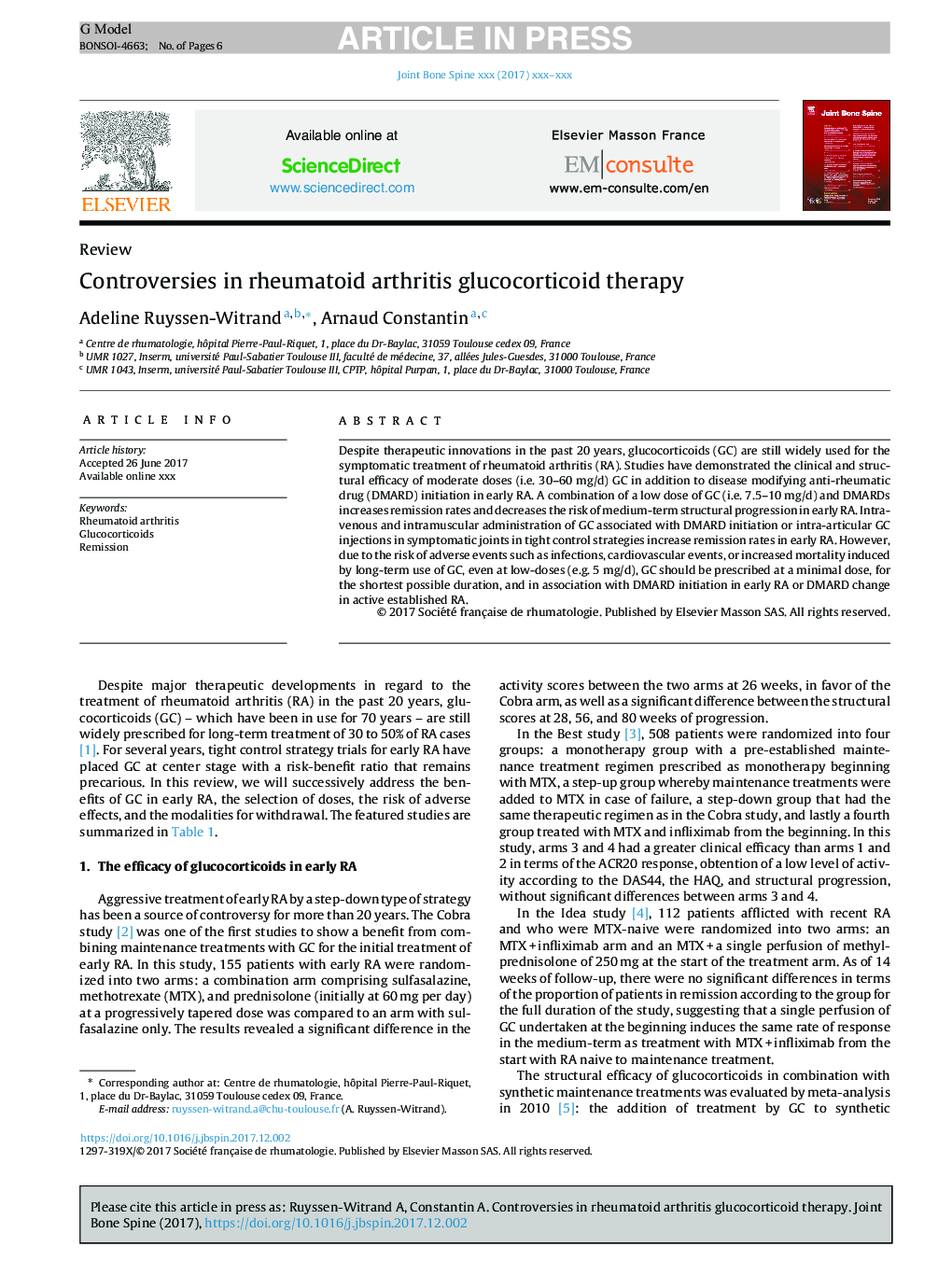| Article ID | Journal | Published Year | Pages | File Type |
|---|---|---|---|---|
| 8739205 | Joint Bone Spine | 2018 | 6 Pages |
Abstract
Despite therapeutic innovations in the past 20 years, glucocorticoids (GC) are still widely used for the symptomatic treatment of rheumatoid arthritis (RA). Studies have demonstrated the clinical and structural efficacy of moderate doses (i.e. 30-60Â mg/d) GC in addition to disease modifying anti-rheumatic drug (DMARD) initiation in early RA. A combination of a low dose of GC (i.e. 7.5-10Â mg/d) and DMARDs increases remission rates and decreases the risk of medium-term structural progression in early RA. Intravenous and intramuscular administration of GC associated with DMARD initiation or intra-articular GC injections in symptomatic joints in tight control strategies increase remission rates in early RA. However, due to the risk of adverse events such as infections, cardiovascular events, or increased mortality induced by long-term use of GC, even at low-doses (e.g. 5Â mg/d), GC should be prescribed at a minimal dose, for the shortest possible duration, and in association with DMARD initiation in early RA or DMARD change in active established RA.
Related Topics
Health Sciences
Medicine and Dentistry
Immunology, Allergology and Rheumatology
Authors
Adeline Ruyssen-Witrand, Arnaud Constantin,
